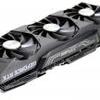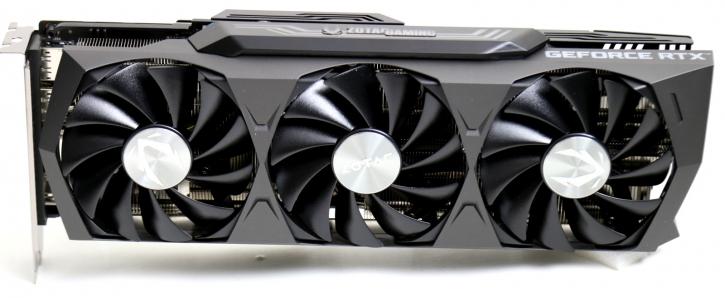Introduction
Zotac GeForce RTX 3080 Trinity
In this review, we benchmark the GeForce RTX 3080 from ZOTAC, a very lovely customized yet reference clocked product. It attempts to offer close to reference performance, good acoustics as well as a friendly design. All priced rationally as well, we hope as the initial stock ran out faster then I can spell my name.
Note: the review was conducted prior to the reported CTD issues; we delayed the review a few days as we wanted to see how that situation panned out. A driver update has resolved the NVIDIA's 3080 series enigmas. We post this review, for now, as-is, with this added notification.
It was 2017 when Ampere as a GPU architecture surfaced onto the web, and up-to earlier this year, NVIDIA has not listed this name in any of its roadmaps on the consumer side. It was with military-level secrecy that the Ampere consumer part was developed. Ampere, of course, is the base unit of electric current in the international system of units. But the GPU is named after André-Marie Ampère, a French mathematician and physicist, considered the father of electrodynamics. NVIDIA has a track record of naming their GPU architectures after mathematicians and physicist or closely related fields, to name a few; Pascal, Fermi, Kepler, Maxwell and more recently Turing. While it was no secret that the new GPUs would be based on Ampere, we've seen much discussion about fabrication nodes, architecture, and specifications. Still, everybody seems to have forgotten that Ampere already launched earlier this year for the HPC market. The very first product based on Ampere was the NVIDIA Tesla A100, outfitted with a GA100 Ampere GPU based on 7nm fabricated at TSMC; that product holds 54 billion transistors and has 6912 shader cores. September 1st of the year 2020 NVIDIA announced three Ampere graphics cards in its initial launch wave. A week before announcements, specifications of the GeForce RTX 3080 and 3090 took a twist; the shader core count doubled up from what everybody expected. The GPUs are fabricated on an 8nm node derived from Samsung. This process is a further development of Samsung's 10nm process, no EUV is applied in production just yet. The first wave of announcements would see the GeForce RTX 3080 and 3090 being released first, and as a bit of a surprise, the GeForce RTX 3070 would be arriving in roughly the same timeframe as well. The initial Ampere for consumers launch entails the GeForce RTX 3070 8GB GDDR6, RTX 3080 10GB GDDR6X, and a 24GB GDDR6X based flagship, the GeForce RTX 3090. The lineup brings Gen2 ray-tracing cores and the 3rd iteration tensor cores. These cards all will be PCIe 4.0 interface compatible and offer HDMI 2.1 and DisplayPort 1.4a.
The Zotac GeForce RTX 3080 Trinity is powered by an NVIDIA GA102 GPU armed with 8704 Shader cores, paired with 10GB of all new GDDR6X graphics memory. The out of the box boost clock for this product is 1710 MHz (and 1710 MHz = reference), and it's memory clocked at reference 19 Gbps (19 Gbps reference). ZOTAC applies a three fan cooler for the Trinity. This is not an OC SKU, and as such, it will (should) have a reference MSRP of 699 USD.


